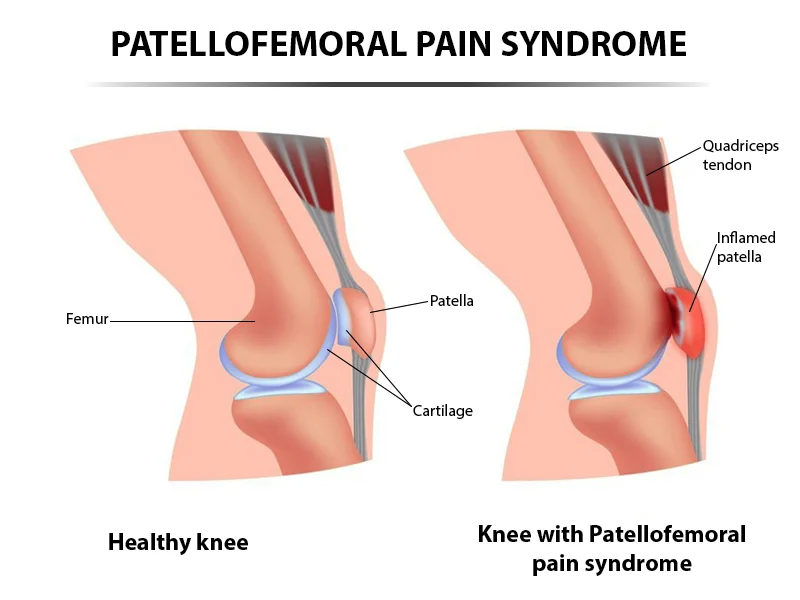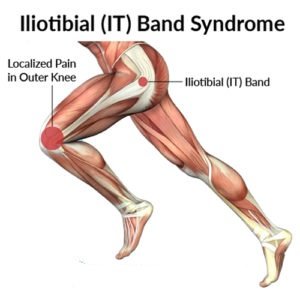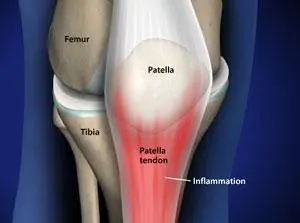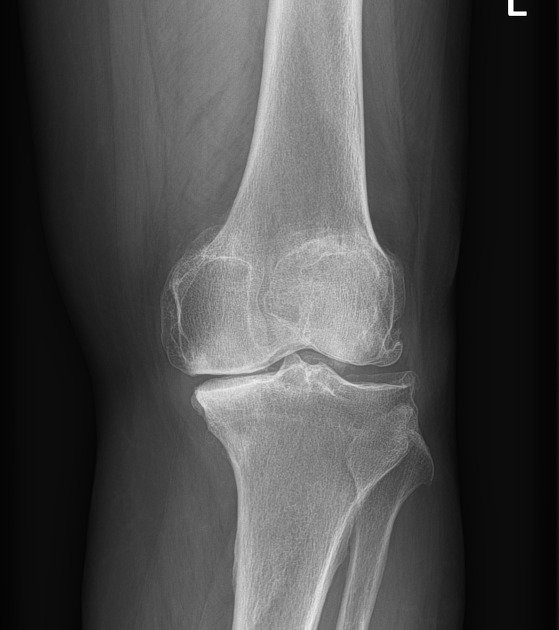
Knee pain during or after squatting is a common issue affecting many individuals, whether they are athletes, fitness enthusiasts, or just performing everyday tasks. Understanding the causes of knee pain while squatting and how to address them can help maintain knee health and prevent long-term complications. At Alleviate Pain Clinic, we offer comprehensive evaluation and treatment options to help you get back to your routine pain-free.
Common Causes of Knee Pain When Squatting
Patellofemoral Pain Syndrome (PFPS)

Often referred to as “runner’s knee,” PFPS is characterized by pain around the kneecap (patella). It occurs when the patella doesn’t move smoothly over the femur during knee movement, often due to muscle imbalances or improper alignment. Squatting increases stress on the patellofemoral joint, leading to discomfort.
Iliotibial Band Syndrome (ITBS)

The iliotibial band is a thick band of tissue running from the hip to the shin. ITBS occurs when this band becomes tight or inflamed, causing pain on the outer side of the knee, especially during activities that involve bending the knee, such as squatting.
Meniscal Tears

The menisci are cartilage cushions that stabilize and absorb shock in the knee joint. A tear can occur from sudden twisting motions or overuse, resulting in pain during weight-bearing activities like squats.
Patellar Tendinitis and Tendinosis

Inflammation of the tendons surrounding the knee, particularly the patellar tendon, can cause pain during squats. While tendinitis is an acute inflammation, tendinosis is a chronic condition that results from degeneration due to repetitive stress.
Osteoarthritis

Degenerative changes in the knee joint, commonly seen in osteoarthritis, can lead to pain during squatting. The cartilage wears away, causing bones to rub against each other, resulting in pain, stiffness, and swelling.
Bursitis

The knee contains several bursae, which are fluid-filled sacs that reduce friction. Inflammation of these bursae, known as bursitis, can cause pain when squatting, particularly if there is repetitive pressure on the knee.
Diagnosing Knee Pain While Squatting
A thorough evaluation includes:
- Clinical Examination: We assess your knee for tenderness, swelling, alignment, and range of motion.
- Imaging Studies: X-rays and MRI can help identify structural damage such as cartilage wear, ligament injuries, or meniscal tears.
- Functional Testing: We may conduct tests to evaluate muscle strength, flexibility, and movement patterns to identify biomechanical contributors.
Effective Treatment Options for Knee Pain When Squatting
The right treatment depends on the severity and underlying cause of the pain. Conservative care may include physiotherapy, strengthening exercises, and anti-inflammatory measures. For persistent cases, minimally invasive interventional treatments can help restore function and reduce pain. Clinics specializing in joint health focus on both immediate relief and long-term healing, avoiding unnecessary surgical procedures whenever possible.
Recovery Time and Expectations After Knee Pain Treatment
The time taken to recover varies with the type of knee pain treatment that is taken and the severity of the injury. When you apply conservative treatment to the knee pain following squats, you may expect a few weeks to respond. Regenerative injections, in contrast, can take two to three months before they show the best results. The vast majority of patients report progressive improvement of movement and a reduction in pain. Long-term outcomes and prevention against re-injury will be significantly improved when physiotherapy is adhered to and the strain is not taken throughout the recovery process.
When Knees Hurt After Squats: When to Seek Medical Help?
Light knee pain can also be relieved by rest, although when the pain does not reduce or even increases during squatting, it is time to visit the doctor. The pain that prevents walking, swelling, or gives rise to a locking feeling can be indicative of a meniscus or cartilage injury. Early diagnosis can be treated promptly and may prevent chronic damage to the joint. When the pain takes more than a couple of days, when it interferes with the daily routine, then professional assistance is necessary.
Why Choose Alleviate Pain Clinic?
At Alleviate Pain Clinic, our multidisciplinary team specializes in diagnosing and treating knee pain using the latest interventional and regenerative techniques. Our patient-centered approach ensures that we create personalized treatment plans tailored to your needs, helping you regain mobility and improve your quality of life.
Conclusion
Knee pain while squatting is often a sign of underlying issues that require attention. Understanding the causes, getting a proper diagnosis, and following a tailored treatment plan can help alleviate pain and prevent further damage. At Alleviate Pain Clinic, we offer a wide range of treatment options to help you find relief and stay active.
FAQs on Knee Pain When Squatting
Squats load the knee joint directly, especially the patellofemoral area, which may expose weaknesses or misalignments not noticeable in other exercises. Poor squat form, weak hip or thigh muscles, and tight ligaments can increase joint stress. Unlike other movements, squats require deep flexion, making underlying structural issues more apparent and leading to knee pain.
Pain behind the kneecap during squats is often caused by patellofemoral pain syndrome, cartilage irritation, or muscle imbalances. When the kneecap does not track smoothly over the femur, pressure builds on the joint surfaces. Weak quadriceps, tight hamstrings, or repetitive overuse during squats can aggravate this area, resulting in discomfort during deep bending movements.
Recovery time varies based on severity. Mild cases of overuse or muscle strain may resolve in two to four weeks with rest, ice, and strengthening. For structural issues or injuries, recovery can take months, especially if regenerative therapies like PRP or prolotherapy are required. Physiotherapy significantly reduces pain and supports a quicker return to activity.
Yes, knee pain when crouching can indicate a serious condition such as meniscus tears, cartilage degeneration, or ligament injury. If the pain is sharp, persistent, or accompanied by swelling, locking, or instability, medical evaluation is crucial. Early diagnosis and treatment prevent progression to chronic damage, ensuring better recovery outcomes and avoiding long-term mobility limitations.
Alleviate Pain Clinic offers advanced, non-surgical treatments for squat-related knee pain, including physiotherapy, regenerative medicine like PRP and prolotherapy, and targeted injection-based therapies. Diagnostic imaging helps identify root causes for personalized care. The clinic’s multidisciplinary approach combines rehabilitation with interventional procedures, ensuring faster pain relief, joint healing, and long-term improvement without unnecessary surgical interventions.





